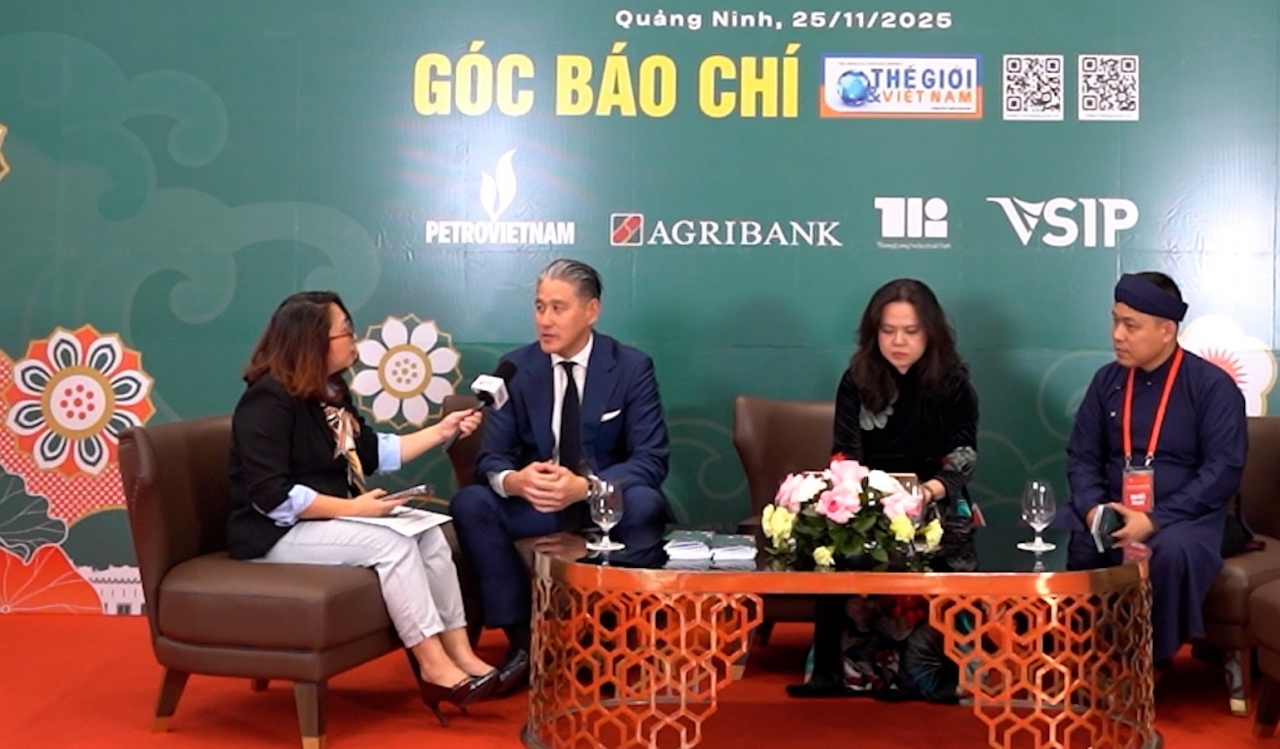
Asia-Africa blocs account for 63 percent of Viet Nam's trade turnover in 2021
Latest
 |
| Electronics components are made at Youngbag Co in Binh Xuyen Industrial Zone. (Photo: VNA) |
Last year, bilateral trade between Viet Nam and the Asia-Africa regions topped 444 billion USD, up 23 percent year-on-year, or 67.3 percent of the Southeast Asian country's total trade value, according to the General Department of Customs.
Viet Nam's exports to the two blocs hit 165.9 billion USD, a year-on-year increase of 15 percent or equivalent to 50.2 percent of the country's total export turnover.
Among Vietnamese export items recording a strong turnover in 2021 included phones and components at 32.29 billion USD; computers, electronics and components (27.32 billion USD); machinery, equipment, tools and spare parts (13 billion USD) and textiles and garments (10.6 billion USD).
Viet Nam's exports to major Asian partners such as China, the Republic of Korea, Japan and ASEAN all saw high growth rates last year, contributing to the positive growth of the country's exports to the bloc.
In 2021, Viet Nam exported 56 billion USD worth of goods to China, up 14.51 percent; 21.7 billion USD to the RoK, up 13.61 percent; 19.8 billion USD, up 3 percent, and 28.6 billion USD to ASEAN countries, up 24 percent.
According to the MoIT, Viet Nam's total import turnover from the Asian and African markets also experienced a significant increase of 28 percent to 278.35 billion USD last year, accounting for 84.3 percent of its total import value.
Staples posting strong import turnovers were computers, electronic products and components at 64.7 billion USD; machinery, equipment, tools and spare parts (40.7 billion USD); phones and components (20.7 billion USD); fabrics (13.7 billion USD); iron and steel (10.7 billion USD) and plastic material (10.39 billion USD).
The ministry said imports from the Asia-Africa region helped maintain the country's supply chain, input materials for production and meet the needs of the people.
It is forecast that in 2022, Viet Nam's trade with markets around the world will continue to face many difficulties. The COVID-19 pandemic remained an obstacle to the recovery of the global economy as new variants continue to appear, thus increasing the spread and challenging global vaccination efforts.
Demand for goods in the manufacturing and consumer sectors might recover to pre-pandemic levels, but a growth spike was unlikely, it said, adding that many countries would continue to apply strict measures to control people and goods at border gates and seaports.
Expanding into new export outlets
To overcome these obstacles, the MoIT said that it would closely follow the State directions on ensuring production activities, maintaining the supply chain, constantly expanding export markets, ensuring supply from the import market while focusing on implementing solutions to help businesses effectively tap into the Asian and African markets in the coming time.
Specifically, it would continue to improve the legal framework for bilateral trade and sub-regional cooperation of Viet Nam with partners in the region to diversify markets and import and export products towards the country’s sustainable commercial development.
At the same time, high-level cooperation with foreign partners would be included to remove difficulties, maintain smooth commercial activities, and help businesses recover after the pandemic.
The ministry also emphasised the importance of effectively implementing signed free trade agreements such as the ASEAN-China Free Trade Area, Viet Nam-Korea Free Trade Agreement, Viet Nam-Japan Economic Partnership Agreement, the Regional Comprehensive Economic Partnership and the Comprehensive and Progressive Agreement for the Trans-Pacific Partnership.
A survey by the MoIT and Vietnam Chamber of Commerce and Industry revealed that businesses had not yet grasped many opportunities from markets that Viet Nam had signed FTAs with due to lack of information.
The MoIT said it would pay more attention to providing enterprises with updated information and guidance on market access to raise their awareness about key market developments, expanding information on new and niche markets.
The ministry will promote trade activities, and support businesses to attend fairs and exhibitions both online and in-person. Facilitating digital transformation and the application of information technology in State management of trade and trade promotion will be part of its efforts.
Meanwhile, it will concentrate on improving the capacity of enterprises to respond to trade remedies of other countries, and actively research and proposing trade remedies to protect the interests of domestic industries.
It will also direct the Vietnamese trade offices and trade promotion offices in foreign markets to promptly inform businesses about the market situation to remove difficulties with enterprise import and export activities.




















